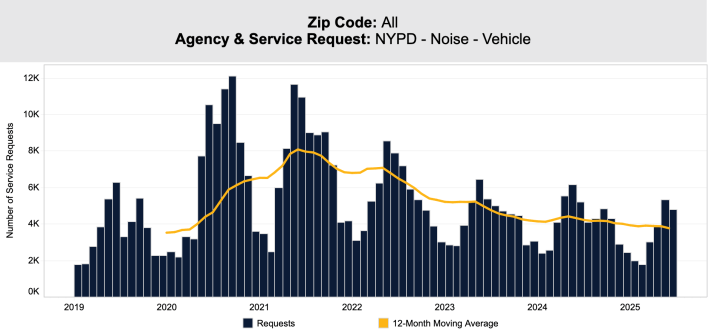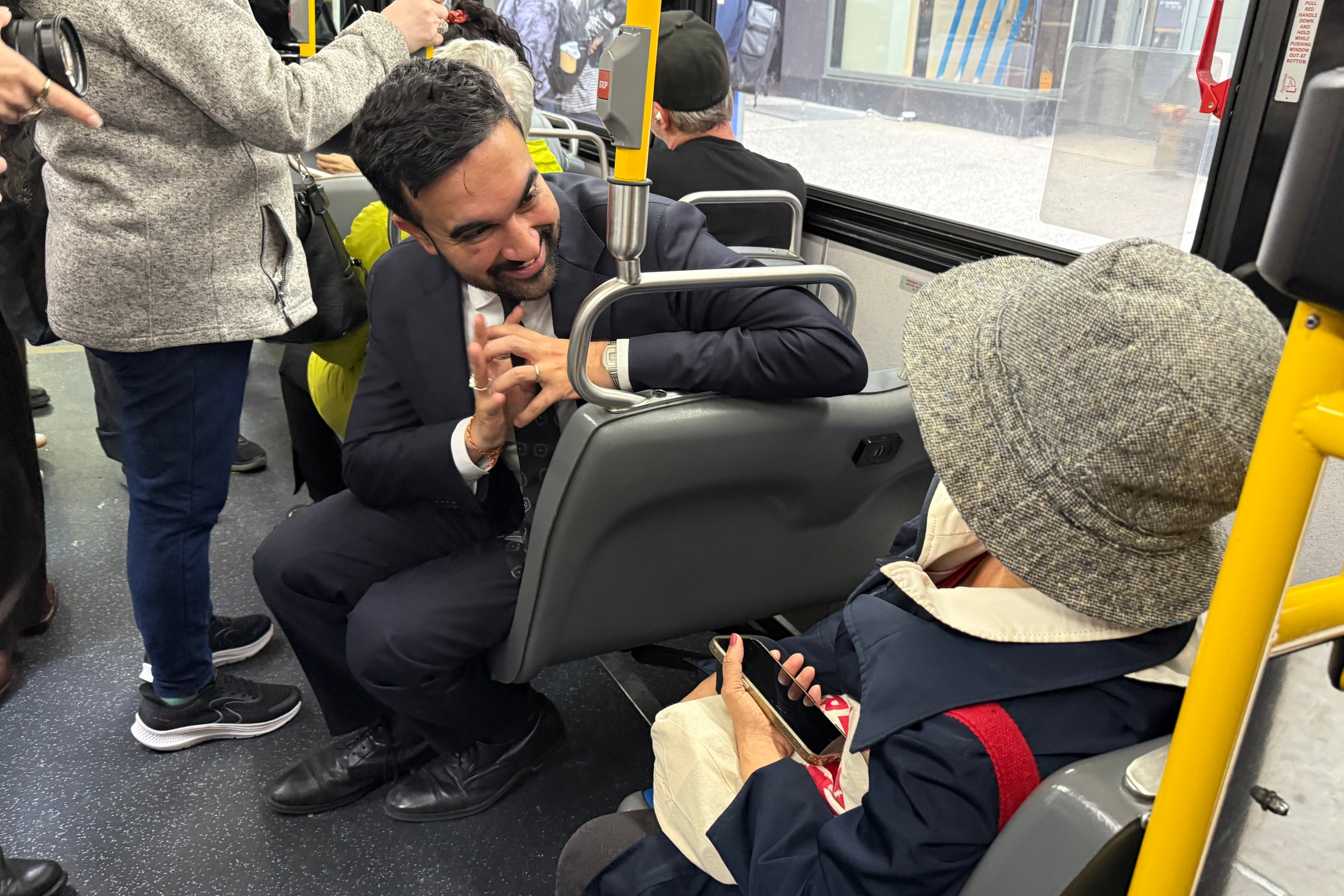Noise on city streets is inevitable — the by-product of living in close quarters in a vital city with eight million people. But some noise is illegal: blaring horns, souped-up engines, or thudding music.
Yet most violators face no legal repercussions for disrupting thousands of residents’ sleep, work, and lives. Some relief has come from the Department of Environmental Protection's automated noise-detecting cameras, but there are too few of them. If the Adams administration is serious about improving New Yorkers’ quality of life, this is an easy fix that can be made before a new mayor comes in.
Shhh!
Excessive public noise is both a health hazard and a nuisance. It is one of the main causes of later-life hearing loss, interferes with children’s cognition and learning, and can cause heart problems, hypertension, psychological issues, and disrupt sleep. Vehicular noise like honking horns or revving motorcycles, which can reach fighter-jet levels of over 120 decibels, is some of the most inescapable.
Nor is noise distributed equally. Its effects are concentrated in lower-income communities, especially those near highways.

Every day, hundreds of New Yorkers submit 311 complaints about too-loud vehicles, which are then referred to the NYPD for action. What happens next? As the complaint page states, “Officers from the New York Police Department will respond within eight hours when they are not handling emergencies. They will be able to take action if the noise is still happening when they arrive.” You might already be seeing the trouble here: such long lead times make enforcement impractical. After all, the noise is coming from a vehicle. They move.
Of the 326,509 vehicle noise complaints responded to between 2020 and 2025, roughly half were dismissed either because police “observed no evidence of the violation” or because “the condition [was] gone.”
In fewer than 1 percent of the complaints, a summons was issued.
Clearly, this sort of whack-a-mole approach to noise complaints is ineffective. But the DEP noise camera program shows a better way.
A noise camera consists of an array of microphones, a fisheye camera, and a license-plate reader. If the microphone detects sound in excess of 85 decibels, the fisheye camera pinpoints the source of the noise and marks it on a panoramic photo. Then, using the license plate reader, a summons is mailed to the vehicle owner. Local Law 7 of 2024required that DEP have 25 cameras — five per borough — in place by September 2025, but made the requirement "subject to appropriations," appropriations that simply have not happened.
That's why there are just 10 for all of New York due to a lack of funds provided by the city. (DEP says two more are "being added soon," but that's all: 12 instead of 25.)
There are too few cameras to fully estimate the cameras’ impact directly. Vehicular noise complaints in the city have been dropping, but that could simply be the result people getting increasingly frustrated at having so many 311 calls ignored.

What can be observed, though, is that the cameras are doing their job. During 2024, 849 DEP summons were issued for noise violations, of which all but seven were upheld by an administrative hearing officer. Those summons resulted in $462,000 in fines, enough to recoup the entire cost of the camera program since its inception. Compare to the NYPD, which issued only 568 vehicular-noise summons that year despite 46,913 lodged complaints (and certainly didn’t make back its costs doing so).
Eric Adams has focused on expanding the NYPD to address quality-of-life issues: “We will not rest until we address the issues that have affected the lives of everyday New Yorkers,” he said in April. But a modern city deserves modern quality-of-life enforcement, and that doesn’t mean more police looking for loud vehicles on an eight-hour delay. That means funding the DEP cameras to catch violations when they happen — so we can all rest a little easier.
For its part, DEP said it can't reach the mandated 25 cameras without "funding or staffing" to grow the program.
“The program has been hugely successful and is one of DEP’s most popular initiatives,” DEP Commissioner Rit Aggarwala told Streetsblog in a statement. "In fact, we have a long waiting list of elected officials requesting noise cameras for their districts."
So Mayor Adams and Council Speaker Adams, you know what you have to do.






